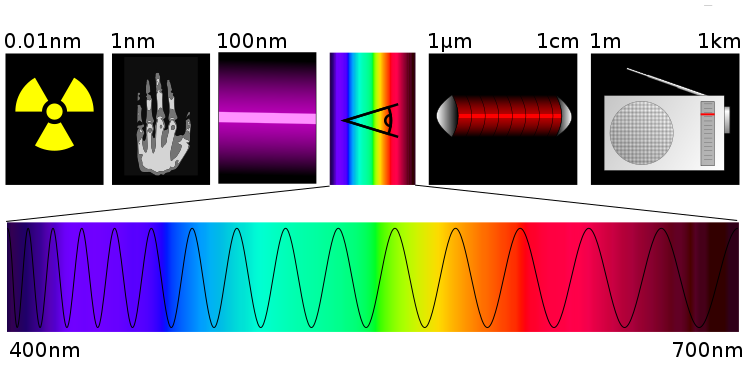A laser is a device that emits light (electromagnetic radiation) through a process called stimulated emission. The term laser is an acronym for light amplification by stimulated emission of radiation.[1][2] Laser light is usually spatially coherent, which means that the light either is emitted in a narrow, low-divergence beam, or can be converted into one with the help of optical components such as lenses. Typically, lasers are thought of as emitting light with a narrow wavelength spectrum ("monochromatic" light). This is not true of all lasers, however: some emit light with a broad spectrum, while others emit light at multiple distinct wavelengths simultaneously. The coherence of typical laser emission is distinctive. Most other light sources emit incoherent light, which has a phase that varies randomly with time and position.
Terminology

From left to right: gamma rays, X-rays, ultraviolet rays, visible spectrum, infrared, microwaves, radio waves.
The word laser originated as an acronym for light amplification by stimulated emission of radiation. The word light in this phrase is used in the broader sense, referring to electromagnetic radiation of any frequency, not just that in the visible spectrum. Hence there are infrared lasers, ultraviolet lasers, X-ray lasers, etc. Because the microwave equivalent of the laser, the maser, was developed first, devices that emit microwave and radio frequencies are usually called masers. In early literature, particularly from researchers at Bell Telephone Laboratories, the laser was often called the optical maser. This usage has since become uncommon, and as of 1998 even Bell Labs uses the term laser.[3]
The back-formed verb to lase means "to produce laser light" or "to apply laser light to".[4] The word "laser" is sometimes used to describe other non-light technologies. For example, a source of atoms in a coherent state is called an "atom laser".
 Principal components:
Principal components:1. Gain medium
2. Laser pumping energy
3. High reflector
4. Output coupler
5. Laser beam







